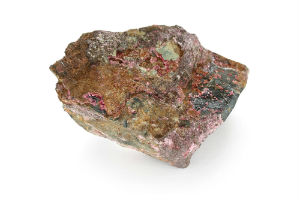Is Cobalt Blue Pigment Safe for the Enviroment

Cobalt is a naturally occurring element that does have beneficial applications. For instance, cobalt is an essential component of vitamin B12. Cobalt has been added to pigments to produce a distinct blue color. Lithium-ion batteries contain cobalt. In the medical field, cobalt-60 is used in radiotherapy and for sterilizing medical equipment. Hip replacements are also made of cobalt. Regardless of these perceived advantages, cobalt is not without its concerns. Cobalt can accumulate to toxic levels in the liver, kidney, pancreas, and heart, as well as the skeleton and skeletal muscle. Cobalt has been found to produce tumors in animals and is likely a human carcinogen as well.
Cobalt Exposure
Industrial plants may leak cobalt and other toxic metals into the environment. Once cobalt particles enter the atmosphere, they settle to the ground and enter the food and water supply; most of the population is exposed to cobalt through food, water, and air. Cobalt makes its way through the environment and cannot be destroyed. People working in industrial settings have an increased risk of exposure to toxins, including cobalt. Also, it's been reported that hip replacements containing cobalt have caused concerns due to nanoparticles of cobalt breaking away and contaminating the body.
Occupational Exposure to Cobalt
Occupational cobalt exposure is a known concern and part of a larger concern that includes exposure to other toxic metals such as arsenic, cadmium, lead, and mercury. All of these compounds are classified as carcinogens and linked to cancer. When the body becomes exposed to these metals, a disruption of homeostasis causes oxidative stress, DNA damage, and serious degenerative diseases. Experiencing the effects of toxic metal toxicity does not require "nuclear meltdown" levels of exposure either. Heart and lung concerns have been shown to follow exposure to levels of cobalt near or even under current occupational exposure limits.[1] Sweden's Department of Occupational and Environmental Medicine at Uppsala University Hospital warns that low levels of cobalt exposure negatively impact lung function. Other studies have linked cobalt to occupational asthma.[2, 3] Occupational exposure to cobalt powder has been linked to vision and hearing concerns. The toxic effect of cobalt on vision was also noted in research conducted by the Robert Stempel School of Public Health at Florida International University in Miami.[4] Unfortunately, now, patients with hip implants containing cobalt are suffering from similar effects including tinnitus, deafness, vertigo, and blindness.[5]
Cobalt & Hip Replacements
Advanced hip disease is a concern that generally requires a hip replacement and most hip replacements are made of cobalt and chromium. Well over one million metal-on-metal hip replacement procedures have been completed, many successfully. However, the use of cobalt-chromium alloys in orthopedic replacements has created a new source of internal cobalt exposure. Wear and corrosion produce soluble metal debris in the form of nanoparticles that disseminate through the body via the lymph nodes and cardiovascular system, leading to toxicity.[6, 7] This can affect immune system function and damage DNA and chromosomes.[8] Furthermore, nanoparticles have properties that their bulk states do not. At this time, much is unknown regarding toxic and carcinogenic effects of nanoparticles although studies have linked them to oxidative stress and redness.[9]
Testing for Cobalt Exposure?
Within days of exposure, a doctor can administer blood or urine tests to detect cobalt levels. Test results will indicate the amount of cobalt in your body and, depending on what prompted your concern, you may be able to pinpoint causes of exposure. However, tests cannot determine what health-related effects you will experience. In my opinion, the health consequences from exposure to any toxic metal, including cobalt, isn't worth the risk. I would encourage you to get your cobalt levels tested and perform a chemical and toxic metal cleanse if you're concerned about the effects of exposure to cobalt.

Watch an In-Depth Video on Everything You Need to Know About Vitamin B12
Length: 51 minutes
References (9)
- Koedrith P, Seo YR. Advances in carcinogenic metal toxicity and potential molecular markers. Int J Mol Sci. 2011;12(12):9576-95. doi: 10.3390/ijms12129576. Epub 2011 Dec 20.
- Rehfisch P, et al. Lung function and respiratory symptoms in hard metal workers exposed to cobalt. J Occup Environ Med. 2012 Apr;54(4):409-13. doi: 10.1097/JOM.0b013e31824d2d7e.
- Walters GI, et al. An outbreak of occupational asthma due to chromium and cobalt. Occup Med (Lond). 2012 Oct;62(7):533-40. doi: 10.1093/occmed/kqs111.
- Mendy A, Gasana J, Vieira ER. Urinary heavy metals and associated medical conditions in the US adult population. Int J Environ Health Res. 2012;22(2):105-18. doi: 10.1080/09603123.2011.605877. Epub 2011 Aug 19.
- Apostoli P, et al. High doses of cobalt induce optic and auditory neuropathy. Exp Toxicol Pathol. 2012 Oct 12. doi:pii: S0940-2993(12)00087-5. 10.1016/j.etp.2012.09.006.
- Campbell JR, Estey MP. Metal release from hip prostheses: cobalt and chromium toxicity and the role of the clinical laboratory. Clin Chem Lab Med. 2013 Jan;51(1):213-20. doi: 10.1515/cclm-2012-0492.
- Simonsen LO, et al. Cobalt metabolism and toxicology--a brief update. Sci Total Environ. 2012 Aug 15;432:210-5. doi: 10.1016/j.scitotenv.2012.06.009. Epub 2012 Jun 23. Review.
- Gill HS, et al. Molecular and immune toxicity of CoCr nanoparticles in MoM hip arthroplasty. Trends Mol Med. 2012 Mar;18(3):145-55. doi: 10.1016/j.molmed.2011.12.002. Epub 2012 Jan 12. Review.
- Magaye R, et al. Genotoxicity and carcinogenicity of cobalt-, nickel- and copper-based nanoparticles. Exp Ther Med. 2012 Oct;4(4):551-561. Epub 2012 Aug 7.
†Results may vary. Information and statements made are for education purposes and are not intended to replace the advice of your doctor. If you have a severe medical condition or health concern, see your physician.
Top
Source: https://explore.globalhealing.com/toxic-metal-health-dangers-cobalt/

0 Response to "Is Cobalt Blue Pigment Safe for the Enviroment"
Post a Comment